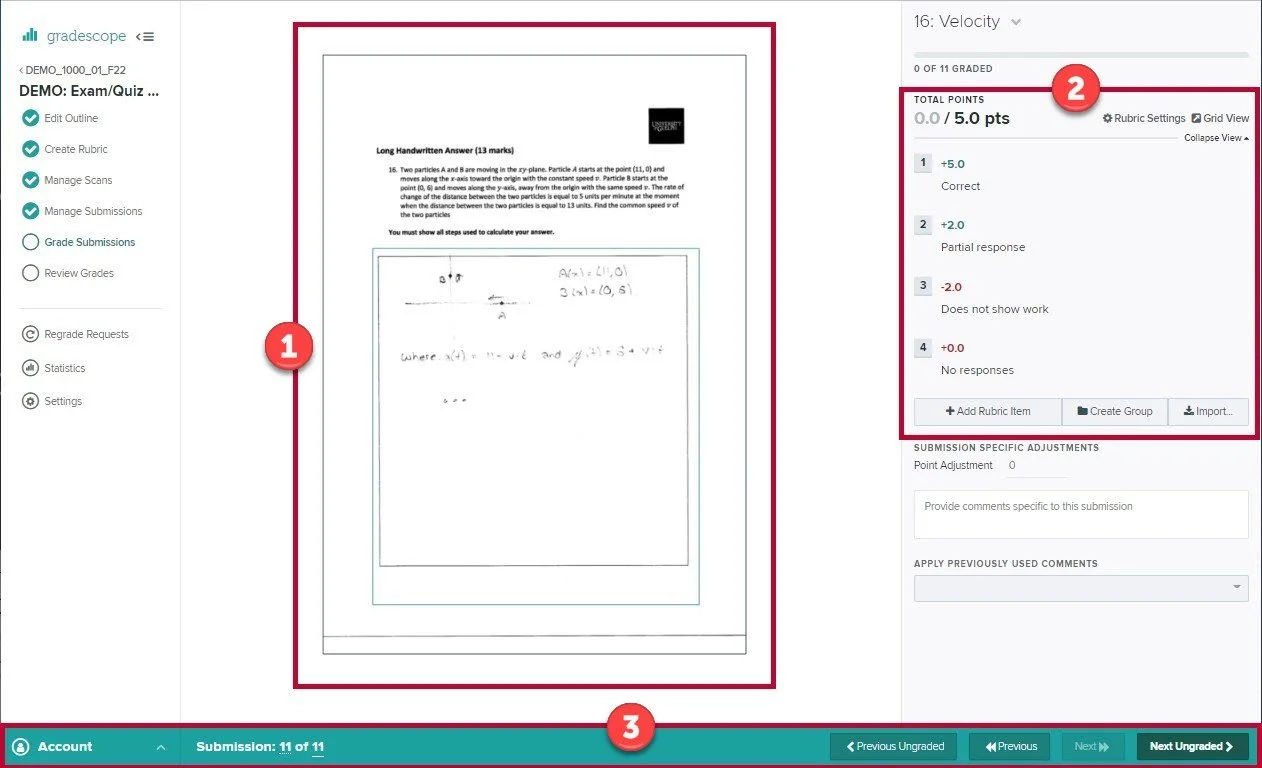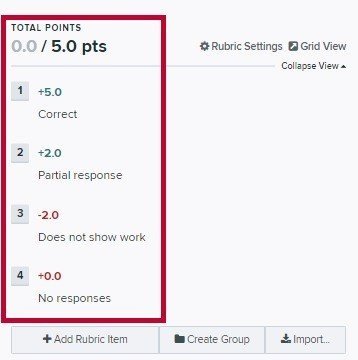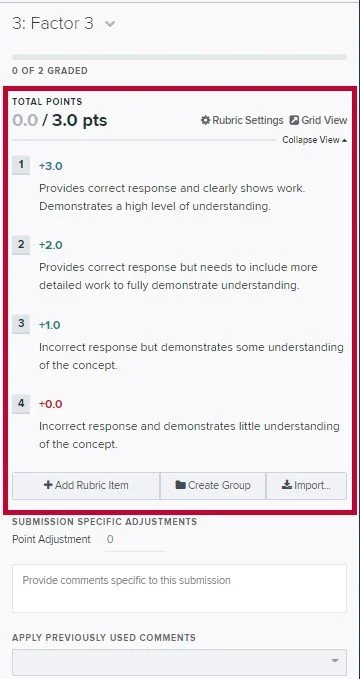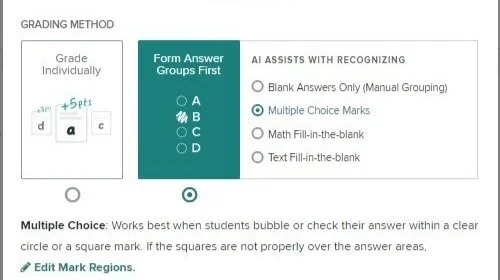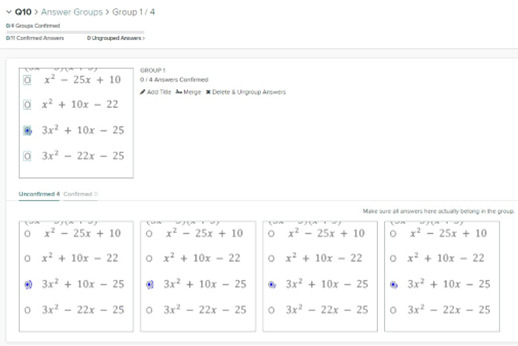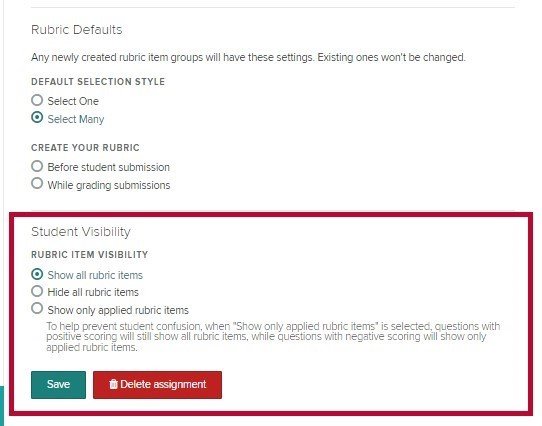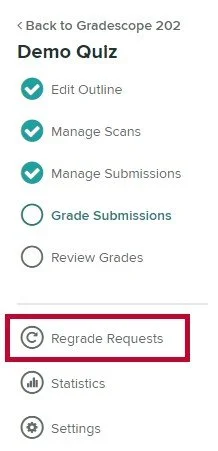Gradescope Exams & Quizzes
About Gradescope Exams & Quizzes
Paper exams and quizzes can be uploaded and assessed through Gradescope. Compared to CourseLink Dropbox, Gradescope allows for more rapid evaluation and collaboration amongst graders. Detailed rubrics and annotations allow for clear communication with students and AI-assisted answer groupings help instructors recognize common knowledge gaps and areas for improvement.
When Should I Use Gradescope Exams & Quizzes?
Gradescope’s Exams & Quizzes assignment type is ideal for in-class, handwritten tests. A unique feature of Gradescope is that graders evaluate a single question across all submissions before moving on to the next problem. This allows for greater consistency between evaluators’ comments and efficient team assessment. Gradescope Exams & Quizzes also incorporate AI-assisted grading to allow for more rapid and equitable evaluation.
The Gradescope Exams & Quizzes Process
An Exam & Quizzes assignment in Gradescope can be set up efficiently, often with no need to modify the original paper exam. Once exam/quiz booklets are scanned, the paper-to-student matching and grading processes can also be completed quickly. The basic steps of the process creating an exam or quiz are outlined below:
Check out the Office of Teaching and Learning’s Teaching with AI Series presentation on Gradescope [June 2024].
Create a Gradescope Exams & Quizzes Assignment
Instructors have two options to access Gradescope Exams & Quizzes – via CourseLink Integration (Content Tool) or directly through gradescope.ca using Single Sign On.
To get the most out of Gradescope and to ensure that your Exams & Quizzes assignment is synced with your CourseLink site’s Classlist and connected to a corresponding grade item, it is recommended that the assignment be created through the integration. Please view our resources for Gradescope’s CourseLink Integration to learn how to create your assignment.
Once the assignment is created via the integration, it can be accessed through the link created in your course site’s Content tool, or by logging in via SSO at gradescope.ca using their School Credentials option.
Important Note: If planning to provide multiple versions of an exam or quiz booklet to students, Gradescope provides the option to create multiple versions. For more information on working with multiple versions, please review the Creating Multi-Version Gradescope Assignments page.
Settings Options for Exams & Quizzes
When creating Exams & Quizzes assignments, you are required to:
Enter a name for your assignment.
Upload a template file as a PDF.
Select whether you would like to enable submission anonymization to your assignment. Submission anonymization can be enabled at the assignment level to replace student names and numbers with a randomly generated text identifier, preventing graders from identifying the identity of the student being assessed. Further information on submission anonymization is available on Gradescope's Help Centre.
Select who will upload submissions - instructor (default) or student.
Note: If you select student, you will be prompted to add a release date, due date, and submission type. Further information on submission types is available on Gradescope’s Help Centre.Choose when rubrics will be created (before student submissions or while grading submissions).
Note: If you select before student submissions you may still modify the rubric while grading.
Create an Outline for the Template File
Once the assignment has been created you are ready to access it on Gradescope to complete the creation of your outline for the uploaded template. An outline defines regions where you expect information to be added when the exam or quiz is printed and distributed to students, including regions for:
Student Name (Name Region)
Student ID Number (ID Region)
Question Regions
Detailed information on the outline creation process can be found on Gradescope’s Creating an Outline page. When you are satisfied with the outline, don’t forget to press the Save Outline button.
Note: If you are not using Gradescope’s Labeled Printouts option, the outline does not need to be created prior to students taking the exam or quiz.
Print/Copy the Exam/Quiz Template
Gradescope supports two options for creating exam booklets:
- Print or make copies of your exam or quiz as you normally would using the same file you upload as a template to Gradescope.
- Print and subset staple labeled booklets (beta).
Note: If using your department’s printer, please contact your administrator or technical support contact for assistance with printing.
Labelled Printouts (Beta)
The Labeled Printouts feature generates a unique code for each page of your exam/quiz. Even if the pages are out of order after the exam/quiz is complete, Gradescope can match the pages to the correct student upon upload to Gradescope.
The Labeled Printouts feature is currently in beta, but available to any Gradescope user by request. If you would like to try this feature, please contact help@gradescope.com and provide them a link to your Gradescope course (not your CourseLink course site).
For more information, please view Gradescope’s Creating Labeled Printouts (Beta) resource.
Scan Completed Quizzes/Exams
Once students have completed the on-paper exam or quiz, collect the exam booklets to scan.
The following should be kept in mind before you begin the scanning process:
All completed exams/quizzes must be uploaded to Gradescope as PDF files.
You may use a department printer/scanner and email the PDF(s) to yourself or save them to a USB drive. Alternatively, you may use a personal scanner. A scanner with a sheet feeder option that allows for multiple page scanning is recommended.
The CCS Gradescope Bubble Sheet Scanning Service does not accept paper-based Gradescope assignments for scanning such as Exams & Quizzes or Homework & Problem Sets. The CCS Gradescope Bubble Sheet Scanning Service is only available for single page bubble sheets.
For scanning tips (including working with stapled pages), visit Gradescope’s Managing Scans page.
A maximum of 80 submissions per PDF file (avoids potential issues with automatic page splitting).
Note: Splitting the PDF using the OpenEd Toolbox or Adobe Acrobat can be done after scanning as well.
Upload Scans to Gradescope
Once students’ exams or quizzes have been scanned to PDF format, you are ready to upload them to the Exams & Quizzes assignment in Gradescope. If you have multiple PDF files for your scans, you may upload as many separate files as required.
Note, if you have not yet created the assignment in Gradescope at this point, please review the Create a Gradescope Exams & Quizzes Assignment and Create an Outline for the Template File sections of this page.
Full instructions on completing the upload process are available on Gradescope’s Uploading Scans section of their Managing Scans page.
Student Uploads
If you have selected the option for student uploads when creating the assignment, you will not have a Manage Scans option. For student-submitted assignments, please refer students to Gradescope’s Submitting an Assignment page.
Adding Extensions
In cases where students are scanning and uploading their work, Gradescope provides the ability to set alternative release dates, due dates, late due dates, and time limit extensions at the assignment level. Please visit the Gradescope Help Centre’s Extending dates and times on an assignment resource for more information.
If you are running multiple timed exams or quizzes through Gradescope with student submissions enabled and you need to provide extended time across all assignments at the course level (e.g., students with time-and-a-half, or double-time conditions through Student Accessibility Services [SAS]), Gradescope provides that option as well. Please visit the Extending Time Limits at the Course Level page on the Gradescope Help Centre site for more information.
Grade The Exam/Quiz
To begin grading, go to Grade Submissions and select the question that you would like to grade. Anyone on your Gradescope Roster with the Instructor or TA role may participate in grading.
There are three core components to the grading page:
- Student submission area
- Rubric
- Bottom action bar
Gradescope Rubrics
Gradescope rubrics allow instructors and TAs to grade quickly and consistently, applying the same set of feedback to every submission. Gradescope rubrics are created for each individual question.
The main type of rubric used in Gradescope is the List View Rubric, which is made up of one or multiple Rubric Items, displayed in a vertical stack. Rubric Items contain a number of points as well as a description for the point value.
Gradescope recently introduced an option for Grid View Rubrics (beta), which are more traditional matrix style rubrics that allow you to add rows and columns of points and criteria to your rubric. As this is a beta feature, please note that you will need to request it be enabled for your Gradescope site by contacting help@gradescope.com (be sure to include a link to your Gradescope course, not to your CourseLink course site).
Gradescope’s Help Centre provides extensive resources to help instructors and TAs with rubrics, including:
Creating a rubric and grading with it
Includes: Importing rubrics, item groups, and keyboard shortcuts.
Gradescope Annotations
Gradescope’s annotation tools allow graders to mark up a student’s submission. When published, students can see these annotations, which can help them identify what part of the submission focus on. Annotation options include text boxes, pencil markups with multiple colours, a box tool, and stickers which include stars, checkmarks and X’s. LaTeX can also be used to add math symbols to comments, text annotations, answer group names, and regrade requests and responses.
Gradescope’s Help Centre provides the following resources to assist instructors and TAs with annotations:
Gradescope's AI-Assisted Grading and Answer Groups
For fixed-template assignments, there are two Gradescope features available that can help grade multiple students’ work at once:
- Answer Groups (all question types): Manually form and grade answer groups, instead of grading individual student answers.
- AI Assistance (some question types): Gradescope’s AI automatically forms suggested answer groups for your review.
Please visit Gradescope’s AI-Assisted Grading and Answer Groups page for detailed information on these options.
Review/Release Grades
Once you are finished grading submissions, the Review Grades page provides an overview of what was graded and allows you to:
- Publish grades and feedback for student review
- Includes an option to notify students via email that grades/feedback are available
- Post grades from Gradescope to CourseLink via the integration
- Export assignment grades, evaluations, and submissions
Note: If you do not want students to access the quiz template, grades, or feedback through Gradescope (e.g., for a final exam) do not publish the grades in Gradescope. You can still use the Post Grades to CourseLink option to push the scores to the associated grade item via the integration, even if the grades are not published on Gradescope.
Hiding Rubric Items
By default, all rubric items are shown to students. However, in some cases it may be preferable to hide all or part of the rubric from students. You can change this from the Assignment Settings page.
For more information on the options available for showing or hiding rubric items, please visit the Gradescope Help Centre’s Hide rubric items resource.
Regrade Requests
Regrade requests allow students to submit short statements about why they think their work should be given another look.
Regrade requests are enabled by default for all assignments. However, they can be disabled by following the steps below:
- Access the Regrade Requests feature from the lefthand toolbar.
- Here you can enable/disable the feature by clicking the Disable Regrade Requests.
For a more detailed look at how Gradescope’s Regrade Requests feature works, please visit the Managing Regrade Requests page on Gradescope’s Help Centre.
Access Data And Statistics
Gradescope provides data and statistics for Exams & Quizzes assignments on two levels:
- Assignment Statistics: The default view showcases the averages from each question. Clicking a question’s bar within the chart will focus on it, updating the stats under the chart.
- Question Statistics: If you click a question in the table below the chart, you can see that question’s statistics, showing you how often each rubric item was applied. This allows you to pinpoint difficulties or concepts that students struggled with.
Useful Tips:
To ensure the best possible AI-assisted grading experience, follow Gradescope's list of recommendations including:
Upload an entirely blank assignment template.
Make sure your template is identical to the one you distribute to students.
Leave some space between your questions, so that the region boxes on your outline don’t overlap.
When creating an assignment outline, be sure the name and student ID regions do not overlap.
Gradescope offers the option to print labelled copies of your exam/quiz. Each student will receive a unique label on their copy of the exam. Gradescope will use the labels to automatically group the pages of each student’s submission together, no matter the order they were scanned or uploaded in. To have the labelled printout feature activated in your course, please contact help@gradescope.com.
Related Videos
Related Programming
Gradescope Online Drop-ins (Tue. 10 AM / Wed. 2 PM)
Weekly Online Workshop: Get Started with Gradescope (Thu. 12 PM)
Introduction to Gradescope (03/03/2022)
Introduction to Gradescope Exams & Quizzes (03/17/2022)
Gradescope for Assessment of On-Paper Assignments and Tests (06/16/2022)
Transitioning from Crowdmark to Gradescope for On-Paper Assessments (06/28/2022)
Other Gradescope Assignment Types
Other Gradescope Scenarios
Gradescope Support
Additional Support information for Gradescope can be found on our Gradescope Support page.
If you need further assistance, please contact CourseLink Support.


